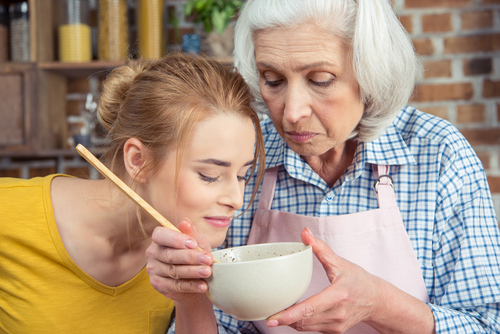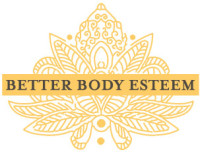
When I think of my maternal grandmother, I cannot help but see her wearing her apron. Her house always smelled delicious from whatever she was baking or cooking at the time. There is such a strong relationship between those memories for me. I often think of the women in my family in terms of food.
We may hear messages from the women in our lives about what we should and shouldn’t be eating, what we wish we could be eating, and what we’re trying not to eat. We may talk about this as well.
We’re often shown that food equals love and we’re encouraged to eat lots of it, especially if we’re sad or under the weather in any way, but we’re also rewarded for having a “thin, fit body.” In popular culture, feminine has come to mean thin, in clothing and accessories that highlight our female attributes.
All of these attitudes and practices are ingrained at an early age, but at any age we can question them and redefine femininity for ourselves. We can examine the messages we’ve taken from our family, our ancestors before us, and the culture of our larger community. We can acknowledge this confusing mixture of ideals and forgive ourselves for being confused or conflicted.
Rarely does a family eat just for nutrition. We all had personal experiences that formed our relationship with food. Do we eat authentically and mindfully? Do we have to clean the plate no matter what? Can we pause to enjoy and even savor our food?
Is there a connection between food and femininity? A considerable one, I realized when I reflected on this question. How authentically do we express our femininity? Do we feel at home in heels and a skirt, or like we’ve hidden our true selves behind a facade? Have we been taught that dressing and acting a certain way is the only way to be feminine, to be a woman?
The pressure of all of this, coupled with any kind of struggles in our lives, can create the perfect petri dish for developing an eating or body image disorder. While we know that some of the causes are genetic, a lot of it is from environment and culture.
Once recovery has started and you begin to build more self-awareness, it can be extremely helpful to look outwards to your family history and relationships, and to the broader communities and cultures in which you were raised.
In the business world, people talk about branding – how you want the public to perceive your company and what you can do to present yourself that way. As individuals we may have a brand as well. We have a certain persona that people see and associate with us. Are we presenting the image we want to project? And is that who we really are, or who we want to be? Are we hiding behind a facade like a wall to protect ourselves or isolate?
Ultimately, we can hope to be living out an authentic version of ourselves as women, one where our outsides match our insides. Where the choices we make are aligned with our personal values so there are no internal struggles. Where the healthy part of us begins and the dysfunctional part is left behind. Where we’re living in the vast area between the extremes of black and white, where all the colors are. Where we’re living as ourselves with no need for restrictive corsets or uncomfortable shoes to look a certain way, or for harmful diets or other eating behaviors.
If we can do this, if we can drop the facades, let down the walls, and build up our own unique version of what it means to be a woman, we can make more authentic and meaningful connections with others, and best of all be a role model for all the girls and young women whose lives we touch.
